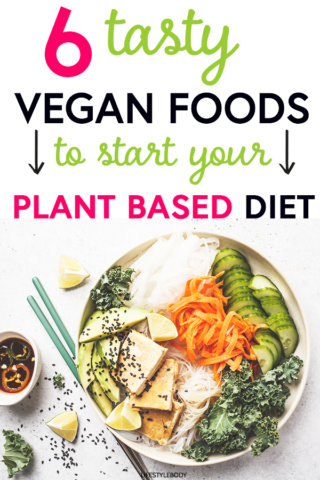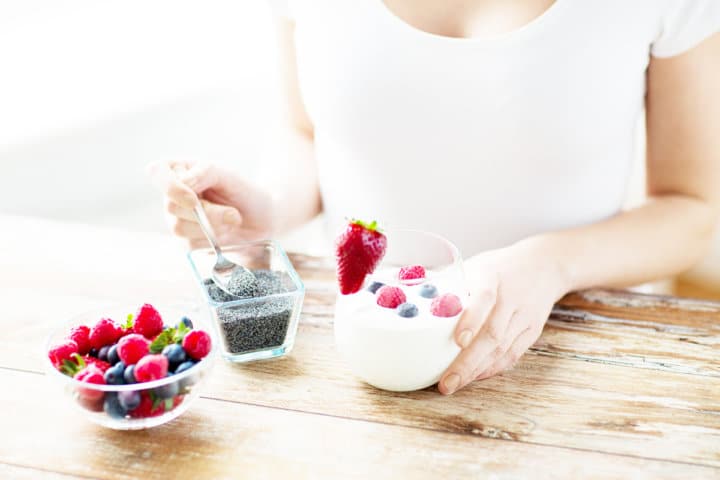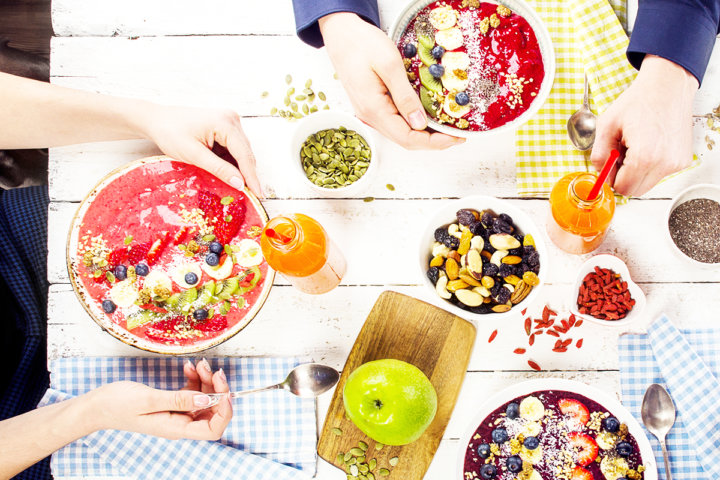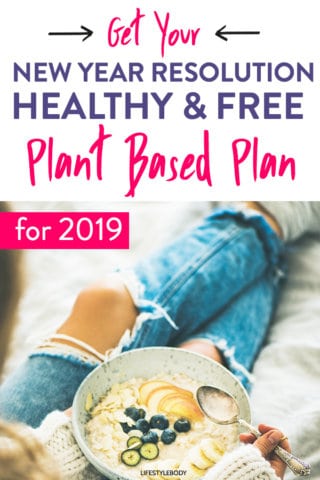Eating right used to be simple. Eat carbs, cut fat.
Then came Atkins telling us we were all wrong. Eat fat, cut carbs.
 But smart ways of eating have always been around like the whole foods plant-based diet.
But smart ways of eating have always been around like the whole foods plant-based diet.
No it’s not vegan. It’s not vegetarian. Well, kinda, but it’s probably not what you’re thinking!
So what is it exactly?
A whole food plant-based diet sets you up to eat more intuitively by connecting us better to our roots and mother nature.
While so much of the world’s issues feel out of our control and even #selfcaresundays seem stressful if you don’t do them “right,” plant-based eaters are making the switch because it is their way of being able to take control of their bodies to live a healthier, longer existence.
By choosing the right foods, they are showing us a more kind attitude toward the environment and planet who desperately needs our attention and compassion.
The world’s a-changing and it’s time to hop on board.
A plant-based diet is the way of the future, and the growing trend is to say, “no,” more often to meat products, as well as processed and prepackaged foods and say, “yes,” a whole lot more to wholesome, vitamin-rich natural foods that come from the ground.
Not only for our bodies but for the planet whose meat supply cannot keep up with the current demands we are placing on it.
It is no secret that our generation is much more conscious about what we put in our bodies than our predecessors.
Plant-based diet benefits are plentiful. By making the switch, your heart health can significantly improve according to WebMD.
Your chances for obesity, diabetes, and Alzheimer’s all decrease dramatically as well when you follow this plan.
If we want to not only be around for a long time for our children but also be healthy and disease free, this diet change could very well be the answer.
As you take this on, you’ll see your energy levels rise, and you’ll develop a deeper mind/body connection. You’ll feel good about yourself because you’ll be eating in a more environmentally sustainable way and you may even drop a pant size or two in the process.
But, you might be wondering, what are the best foods to have stocked in my pantry to kickstart this plant-based diet? If you need a plant-based food list, make sure to check that out at the end of the post!
Plant-Based Diet for Beginners
Going plant-based doesn’t need to be tricky, time-consuming or stressful.
Think of a plant-based diet as a lifestyle that provides you with all the right foods to live a bountiful and nourishing existence.
By shifting your thinking ever so slightly, you’ll see your food as having the key to properly fuel your cells and organs, rather than a filler to crush cravings and provide temporary satisfaction that leaves you feeling hungry again within a couple hours.
The craziest thing I noticed is that when I began to eat more fruits and vegetables, my body started to crave salads and green smoothies instead of burgers, chips and candy.
When your body starts to get what it needs, it rejects the fake foods and demands more of the right, natural stuff.
If you’re looking for an excuse to binge some Netflix, documentaries like Forks Over Knives, Fat Sick and Nearly Dead and Vegucated provide a wealth of information to get you up and running on your way to better health as you learn how to eat a whole food plant-based diet.
As Michael Pollan, food writer states, “Eat food. Not too much. Mostly plants.” This perfectly sums up these shows and after watching you’ll see how it makes complete sense to live life this way.
Plant-Based Diet Meal Plan

Veganism or Vegetarianism doesn’t automatically equal healthy eating. Vegans don’t eat meat at all whereas vegetarians may still consume eggs and cheese. However, these diets can be overly processed and unnatural (things like veggie dogs and french fries).
Whereas a plant-based eater focusses on natural foods that mostly come from the ground like fruits, vegetables, nuts/seeds, and legumes. They may still consume a little bit of meat or meat product (milk, cheese, eggs) as they see fit as well, viewing meat as more of a garnish to be added to their plate rather than the main event.
You can start small too. Even little changes will have a big impact. Think Meatless Mondays or Salad Sundays.
You can easily transition your meat-eating habits to more plant-based goodness by having these plant-based staples in your pantry.
6 Staple Plant-Based Foods

1. Fruits (berries, bananas, oranges, apples, melon)
Fruits have high levels of Vitamin A and C, potassium, folate, and fiber which are all essential for reducing the risk of chronic diseases and do your body good.
2. Leafy Green Veggies (kale, spinach, romaine lettuce, collard greens, parsley broccoli, Brussel sprouts)
Leafy green veggies are rich in vitamins A, C, E and K, fiber, magnesium, potassium, and iron.
Easy ways to get your daily dose of greens is by throwing a handful of spinach or kale into a blender.
Add some almond milk, a little bit of natural honey or peanut butter, a handful of berries, half a banana or avocado for a rich, thick and creamy flavor, as well as some chia seeds for an easily added dose of protein and omega 3’s.
A surefire way to get even the biggest manly meat eaters in your home eating a salad is by combining arugula or romaine, with chopped cucumber and green onion, sprinkle with goat cheese and drizzle with olive oil, balsamic vinegar, and garlic.
Toss this all together, and I’m telling you, you’ll have a salad convert on your hands after one bite.
3. Legumes (lentils, chickpeas, black beans, peas)
Legumes are high in fiber, protein, iron, calcium, zinc, magnesium, and folate.
These homemade hummus recipes make easy and delicious chickpea dips, perfect for pairing with your favorite cut-up veggies like carrots, cucumber and celery and there are even a few recipe variations, so you never get bored.
Essentially all you need are these things to make a tasty snack or appetizer:
- chickpeas
- garlic
- tahini
- lemon juice
- cumin
- red pepper flakes
- salt
- black pepper
- extra virgin olive oil
- water
- fresh parsley
Garlic and tahini are two great staples in a plant-based diet too because they are full of essential minerals and antioxidants as well and make everything taste delicious.
A cozy, satisfying dish that can easily be made plant-based is this chili. Consisting of simple, cheap ingredients such as:
- black beans
- quinoa
- pumpkin puree
- bell peppers, and
- seasoning
This is a simple, hearty dish that helps my family get through winter and can be put in the slow cooker in the morning and left all day to do its thing.
4. Nuts/Seeds (almonds, walnuts, cashews, pumpkin seeds, chia seeds, flaxseeds)
Nuts and seeds are high in heart-healthy fat, protein, magnesium, zinc, calcium, and phosphorus. For a filling on-the-go snack, combine your favorite nuts and seeds with some dried fruit for an instant and natural mood and energy boost
5. Healthy Fats (avocados, olive oil, coconut oil, MCT oil, grass-fed butter)
Fats help you feel satiated for longer and are great for your heart and brain health.
I like mixing a tablespoon of grass-fed butter and MCT oil in my coffee in the morning instead of cream for a rich and creamy flavor that helps me get through busy, breakfastless mornings without crashing or having nagging hunger pains.
6. Whole Grains (Quinoa, Oatmeal, buckwheat, brown rice)
Whole grains all provide carbs for energy and fiber to make you feel full. Toast with smashed avocado, Himalayan sea salt and lemon are a tasty, satisfying staple in our home.
Vegan Grocery List on a Budget
I think many people assume vegan groceries are going to be more expensive and more out of reach, but they certainly don’t have to be.
If you shop what’s in season at farmers markets, you’ll find high quality, reasonably priced produce.
There is nothing wrong with buying frozen fruits and veggies that aren’t in season and will save you a ton too.
Also, Costco is a winner in my books for buying large quantities for less. Things like nuts, seeds, avocado and olive oil, bread, nut butters, frozen fruits and vegetables, and oatmeal can all be bought in bulk and will save you a fortune in the long run.
 If you’re looking for a quick meal, the black bean burgers from Morningstar sold at Costco are the bomb, come in a big pack and are highly nutritious/feel-good food too.
If you’re looking for a quick meal, the black bean burgers from Morningstar sold at Costco are the bomb, come in a big pack and are highly nutritious/feel-good food too.
Shopping in the bulk section of your supermarket rather than buying prepackaged is also extremely cost-efficient. Here you can find seeds, nuts, spices, herbs, dried fruit, and grains.
Also, think about buying generic brands rather than name brand to stay within budget. There’s no shame in the no-name game.
Preparing foods from scratch rather than prepared is the way to go too.
Easy, cost-effective dishes like stir-fries, pasta, oatmeal, hummus, chili, soups, and salads are all great options for building a shopping list to take your lifestyle to the next level without breaking the bank.
It doesn’t need to be hard, and it doesn’t need to be complicated. If you’re looking for an easy, intuitive way to take control of your eating, a plant-based diet makes sense and is entirely within your reach. It’s only natural after all!